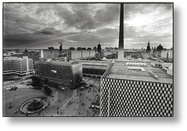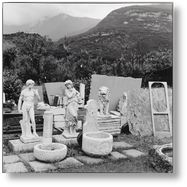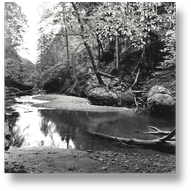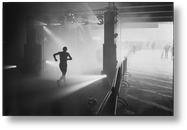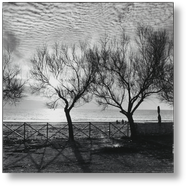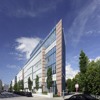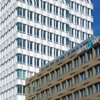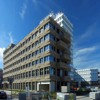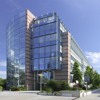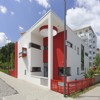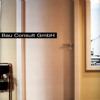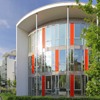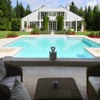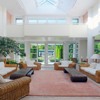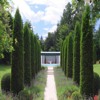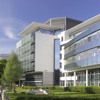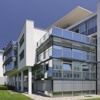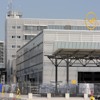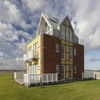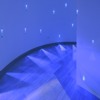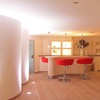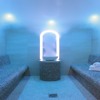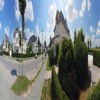


Urban Landscapes:
Historic Preservation and the new Berlin more
Mediterranean Fragments - Figments from the Real World:
Italy in Transition more…
Gorges -:
Mountain stream in the Alps more…
Bohemia - Relics and Departure:
Springtime in Czech more…
Munich Media Marathon:
How to overcome the baser more…
NYC - Borough Park:
Jewish life in New York more…
Calabria:
Land of the Phaeakans more…
New features

From Industry to social housing

Foreword
By Kai-Uwe Nielsen
Architecture - From Industry to social housing
The definition of architectural photography is precised by the term of discribing
already built architecture and interior design as the center of focus. But as normal
we have a great variation of imagery. The simply and clearly description or reproduction
with highend photographical equipment is the classical standard, but just the intension
of the developers, the architect or the builder has to be transformed into the picture,
if it is a commercial work. So, art or better creativity comes into play for the
photographer. It is unnecessary to explain the whole history of architectural photography,
but one must emphasize, that in the late 1960’ to the late 1990’ the so called German
„Becher School“ art-students of the pioneering artists Bernd and Hilla Becher have
become revolutionary for the photography of architecture. In a form of documentation
the married couple Bernd and Hilla Becher preserved the decreasing industrial architecture
of the Ruhr for posterity. They used a simple largeformat field-camera with standard
focal length lenses and b/w films and attached great importance in photographing
without distorsions and always with a light and soft daylight - as one knows the
strong, dramatical daylight produces deep shadows and very bright high tones and
is therefore feared for its high contrast -. Their students and followers, like Thomas
Struth, Andreas Gursky, have perfected this technique - or perverted, like other
critics think - , by using color and by the mean of digital manipulation. But especially
the digital manipulation of a file or a scanned slide gives the photographer unknown
possibilities: Interior design, from the beginning of photography a great challenge,
could be shown in an eye-like way especially in reducing contrast between inside
and outside. The atmosphere of the surrounding area can be changed by deleting other
buildings or by copying passers as a form of staffage. On the other hand the door
is open for great photomontages like in the pictures of Andreas Gursky and the truth
of photography is suffering. But a good architect is alway an artist too. His sensiblity
is the correlative to transform his intension into a photograph. His architectural
plans and drawing provied the guideline for photographical studies on his work. And
after all these challenges for the photographer it is patience that is needed most.
To wait for the right light situation or for dismantled scaffoldings is time consuming
and can be faced only by a straight organization and thoroughly planning. In the
decisive moment the photographer has to be very quick in handling his equipment,
since a good image is unrepeatable.
We still believe in the authenticity of photography but we are cheated in nearly
every photograph nowadays. The dancing act for a professional photographer in finding
the balance between truth and appearance is very difficult since the expectations
of beautifying are high. But for it is commercial work it is nice to see a customer
happy and satisfied with the pictures and this safes your livelihood. More….


Photo Copyright by Dr.Kai-Uwe Nielsen for all countries | No part of this webpage and photographic images may be reproduced in any manner whatsoever.
According to WIPO treaty, Berne Convention and German Law § 4 (BGB) § 97 (BGB) and § 72 (BGB) Urheberrechtsgesetz © All rights reserved | Terms of use | Privacy policy
| references |
| People - Portrait |
| Architecture |
| Art and Science |
| Fashion |
| Motor Show |
| Anglia - Firth of Flensburg |
| Bohemia - Czech |
| Calabria |
| Italy in Transition |
| New Berlin |
| Homeless |
| NYC - Borough Park |
| Marathon |
| Gorges |
